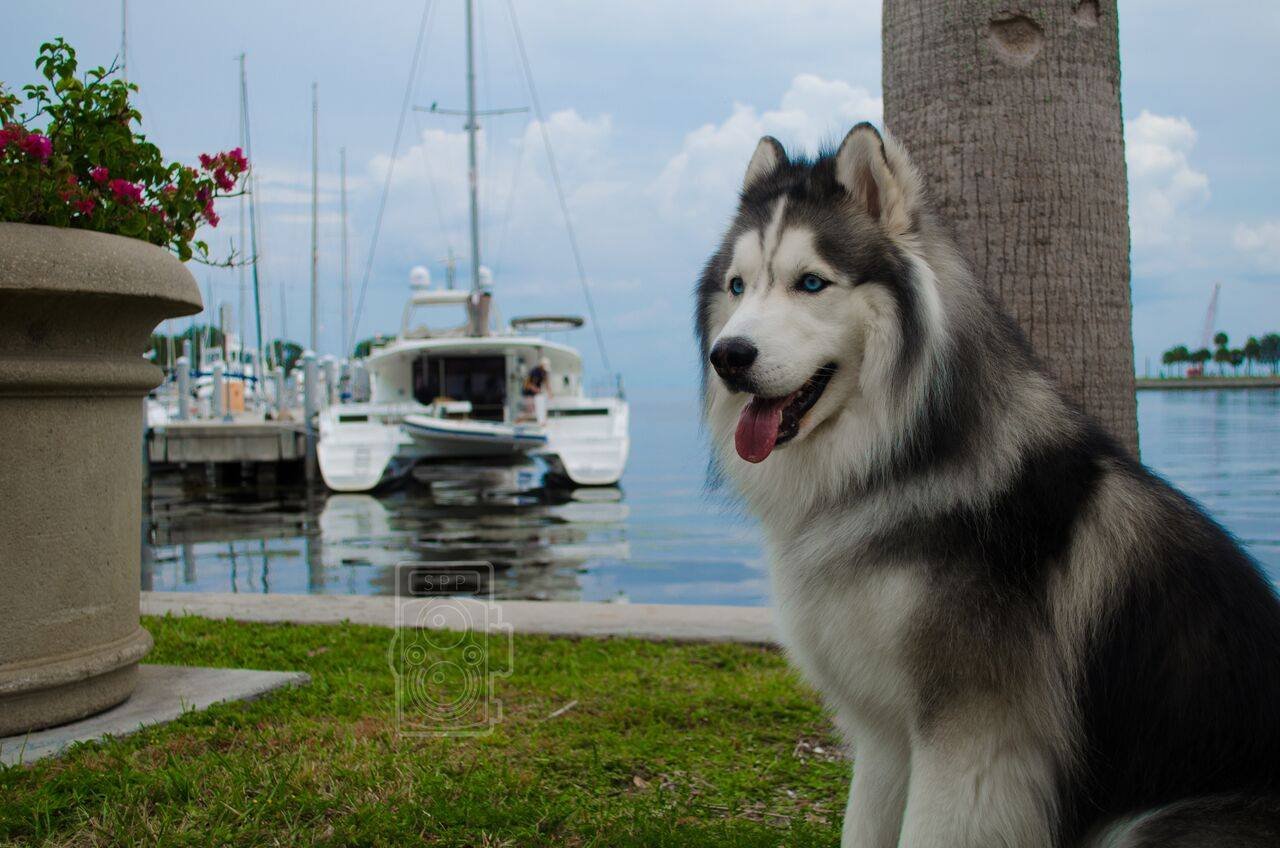Huskies DO Live Happily in Florida’s Hot Weather
Meant to adapt whatever their environment, huskies can and do live happily in hot, even tropical climates.
Readily recognizable by their rich, luxuriant coats, huskies have both a thick topcoat and an undercoat. Their topcoat consists of strong and wiry pieces of fur that help repel water, sunshine, and ultraviolet rays by moving air back and forth – much like a fan. Their undercoat, meanwhile, serves to insulate their skin from any heat their topcoat may absorb. In winter, their coat insulates them and keeps them warm. In the summer, that coat cools them off and keeps them safe.
And although they’re legendary for adapting themselves to the heat, huskies do have their limits. In other words, when is hot simply TOO hot for them to be outside? When answering this question in regards to YOUR husky, consider the following criteria: the humidity level, the color of his coat, his age and overall health, the pace of his movements on an average walk, and whether you’re walking on asphalt as opposed to either grass or dirt.
Generally speaking, though, any temperature higher than 90 degrees F (32 degrees C) will be TOO hot for him to comfortably continue with his usual outdoor activities. Let the temperature inch past 95 degrees F (35 degrees C) and your husky will begin to struggle in the sun while his walk slows down to a weary plod.
Consider, then, the following ways to keep your husky active, cool and safe at the same time:
Since this breed is passionate about water and loves being wet, have your husky walk and play in and out of a lawn sprinkler or provide him with a kiddy pool in your backyard. If you have your own in-ground swimming pool, even better, access to a lake, better still. This way, your husky will be able to stay cool happily and easily while enjoying an invigorating workout by splashing around in the water.
Ensure he has sufficient shade when he wants to rest outdoors, whether it’s something as simple as a large, leafy tree or a sophisticated, purpose-built doghouse. Test out the shade’s effectiveness yourself by seeing if you notice a difference in the heat when you sit in it. If it’s efficient enough to make you feel cooler, it should prove equally as efficient at keeping your husky cool.
If your husky is especially enamored of walking and exploring, walk him for shorter periods of time and walk him only in the cool hours of the morning and evening.
If it’s too hot outdoors even for you, confine your husky’s exercise and playtime to the inside safety – and coolness -- of your home. Games of fetch and tug-o-war, even a miniature, improvised obstacle course will have him flexing his muscles and burning off his excess energy in no time.
Of utmost importance, however, is being alert to the telltale signs that your husky is overheating. Some of the most common ones include a dry nose and mouth, excessive panting or hyperventilating, lack of appetite, disorientation, lethargy, stumbling, vomiting, and collapsing. These signs indicate that he’s dehydrated and in immediate need of fresh, cool water and time in an air-conditioned spot. The more severe these symptoms are and the more of them he has, the more at-risk he is, making a prompt visit to your vet essential -- especially if he loses consciousness.
One final word of caution: NEVER shave your husky’s coat!

